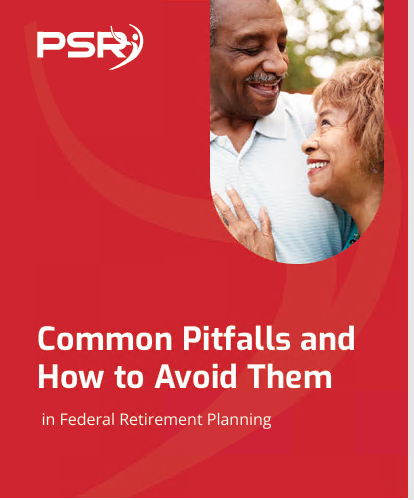Civil Service Retirement System (CSRS)
The Civil Service Retirement System (CSRS) is a significant component of the federal retirement landscape, especially for those who began their federal service before 1984. Though it has been largely replaced by the Federal Employees Retirement System (FERS), CSRS continues to provide robust benefits to many long-serving federal employees. We will look into the details of CSRS, covering its history, eligibility criteria, benefits, survivor options, and how it compares to FERS. By understanding these aspects, federal employees can make informed decisions that will ensure a secure retirement.
The Historical Context of CSRS
The Civil Service Retirement System was established in 1920 as the first comprehensive retirement system for federal employees. Before the creation of CSRS, federal employees lacked a structured retirement plan, often leading to financial instability in their later years. The system was a response to the growing need for a formalized pension plan that could provide federal employees with a reliable source of income upon retirement.
Over the years, CSRS evolved, with various legislative changes enhancing benefits and adjusting contribution requirements. However, the most significant change came with the introduction of the Federal Employees Retirement System (FERS) in 1987. FERS was designed to modernize federal retirement benefits by incorporating Social Security, a thrift savings plan (TSP), and a smaller defined benefit component. Employees hired after December 31, 1983, were automatically enrolled in FERS, while those already in CSRS could choose to switch or remain under the CSRS plan.
Despite the shift to FERS, many employees opted to stay with CSRS due to its generous benefits. As a result, CSRS remains a critical part of the retirement planning process for many federal employees today.
Eligibility Criteria for CSRS
Eligibility for the Civil Service Retirement System is primarily determined by the date of hire. Federal employees who were hired before January 1, 1984, are generally covered by CSRS. These employees had the option to switch to FERS when it was introduced, but many chose to remain with CSRS due to its higher pension benefits.
To qualify for retirement under CSRS, federal employees must meet specific service requirements. Typically, an employee needs at least five years of credible federal service to be eligible for CSRS benefits. Additionally, employees must meet one of the following age and service combinations:
- Age 55 with 30 years of service
- Age 60 with 20 years of service
- Age 62 with 5 years of service
Employees who retire before reaching these age and service thresholds may be eligible for an immediate annuity, but they will face a reduction in benefits. It’s important for employees to carefully consider the timing of their retirement to maximize their benefits under CSRS.
For employees who had a break in service or transitioned to FERS, a hybrid approach known as the CSRS Offset may apply. In this case, the retirement annuity is calculated under CSRS rules, but it is offset by the value of Social Security benefits earned during the employee’s CSRS-covered service.
How CSRS Benefits Are Calculated
One of the most appealing aspects of CSRS is the generous pension it offers, which is based on a formula that considers both the length of service and the employee’s highest three consecutive years of earnings, known as the “high-3” average salary. The formula used to calculate the CSRS pension is as follows:
- First 5 years of service: 1.5% of high-3 average salary per year
- Next 5 years of service: 1.75% of high-3 average salary per year
- Beyond 10 years of service: 2% of high-3 average salary per year
Let’s consider an example where a federal employee has a high-3 average salary of $100,000 and has completed 30 years of service. Their CSRS pension would be calculated as follows:
- First 5 years: $100,000 x 1.5% x 5 = $7,500
- Next 5 years: $100,000 x 1.75% x 5 = $8,750
- Remaining 20 years: $100,000 x 2% x 20 = $40,000
- Total annual pension: $7,500 + $8,750 + $40,000 = $56,250
This calculation shows that the longer an employee serves and the higher their salary, the more substantial their CSRS pension will be.
Cost-of-Living Adjustments (COLAs)
CSRS pensions are also adjusted annually for inflation through cost-of-living adjustments (COLAs). These adjustments are based on changes in the Consumer Price Index (CPI) and are intended to help retirees maintain their purchasing power. Unlike FERS, where COLAs are capped at 2% if inflation is between 2% and 3%, CSRS retirees receive full COLAs that match the CPI. This difference can have a significant impact on the long-term value of the retirement benefit, especially during periods of high inflation.
For instance, if the CPI increases by 3%, a CSRS retiree’s pension will increase by 3%, whereas a FERS retiree might see a smaller adjustment. Over time, these COLA differences can lead to substantial disparities in retirement income, making CSRS a more attractive option for those who are eligible.
Survivor Benefits Under CSRS
CSRS also offers survivor benefits, allowing retirees to provide financial support to their spouses or other eligible beneficiaries after their death. To provide survivor benefits, retirees must accept a reduction in their own annuity. The standard reduction for providing a full survivor annuity is 10% of the retiree’s annuity, which then provides a benefit equal to 55% of the retiree’s full annuity.
For example, if a retiree’s annuity is $50,000 per year, accepting a 10% reduction would lower their annuity to $45,000, and the survivor benefit would be $27,500 annually. This option ensures that a retiree’s spouse is financially supported in the event of the retiree’s death, which can be especially important if the spouse does not have their own substantial retirement income.
Retirees can also opt for a partial survivor benefit, which provides a smaller annuity to the survivor in exchange for a smaller reduction in the retiree’s annuity. The specific amount of the reduction and the survivor benefit can be customized based on the retiree’s preferences and financial needs.
Comparing CSRS and FERS: Understanding the Differences
While CSRS is no longer available to new federal employees, understanding its benefits and how they compare to FERS is crucial for those who are eligible for both systems. Here are some key differences between CSRS and FERS:
Pension Benefits:
- CSRS: Provides a larger pension relative to FERS, with benefits calculated using a formula that takes into account years of service and the high-3 average salary.
- FERS: Includes a smaller pension component, supplemented by Social Security benefits and the TSP, which operates similarly to a 401(k) plan.
Social Security:
- CSRS: Most CSRS employees do not contribute to Social Security, meaning they do not receive Social Security benefits unless they have other covered employment.
- FERS: Employees contribute to and receive Social Security benefits, which can supplement their FERS pension and TSP savings.
Cost-of-Living Adjustments (COLAs):
- CSRS: Retirees receive full COLAs based on the CPI, which helps protect against inflation.
- FERS: COLAs are capped at 2% if inflation is between 2% and 3%, potentially resulting in smaller adjustments compared to CSRS.
Survivor Benefits:
- CSRS: Offers generous survivor benefits, allowing retirees to provide for their spouses after death, with options to customize the benefit amount.
- FERS: Also offers survivor benefits, but the options and formulas differ from CSRS.
Choosing between CSRS and FERS can be complex, and the decision depends on various factors, including the length of service, salary history, and personal financial goals. For those eligible for both systems, consulting with a federal retirement advisor can help clarify which system will provide the best retirement income.
CSRS Offset: Combining CSRS and Social Security
For some federal employees, the CSRS Offset plan applies. This hybrid approach combines aspects of both CSRS and Social Security. Employees covered by the CSRS Offset contribute to Social Security and earn benefits under both systems. However, the CSRS pension is reduced (or “offset”) by the value of the Social Security benefits earned during the employee’s CSRS-covered service.
The CSRS Offset was introduced to accommodate employees who had been in CSRS before the switch to FERS but later became eligible for Social Security. The offset is calculated to ensure that the total retirement benefit from CSRS and Social Security is equivalent to what would have been received under the original CSRS plan.
For example, if an employee has 20 years of service under CSRS and then switches to FERS, they might have a combination of CSRS benefits and Social Security. The CSRS annuity would be calculated based on the years of service under CSRS, with an offset for any Social Security benefits. This can be a complex calculation, and it is often advisable to work with a federal retirement advisor to understand the full implications.
Retirement Planning Under CSRS: Key Considerations
Planning for retirement under CSRS involves several unique considerations compared to other retirement systems. Since CSRS does not generally include Social Security, retirees must rely more heavily on their CSRS pension, personal savings, and other investments to support themselves in retirement. Here are some critical areas to focus on:
1. Savings and Investments
Even though CSRS provides a robust pension, it’s essential for federal employees to save and invest for retirement. Without the TSP as a significant component of retirement income, CSRS employees might need to focus more on personal savings, IRAs, and other investment vehicles to ensure they have enough to live comfortably in retirement.
The key to successful retirement planning under CSRS is diversification. Employees should not rely solely on their CSRS pension but should also consider other sources of income, such as:
- Individual Retirement Accounts (IRAs): These accounts offer tax advantages that can help grow retirement savings over time. Both traditional and Roth IRAs have their benefits, and choosing the right one depends on individual financial situations and retirement goals.
- Brokerage Accounts: These accounts allow employees to invest in a wide range of assets, including stocks, bonds, and mutual funds. While they don’t offer the same tax benefits as IRAs, they provide more flexibility in terms of withdrawals and investment choices.
- Real Estate: Investing in property can provide a source of passive income in retirement. Whether it’s through rental properties or real estate investment trusts (REITs), real estate can be a valuable addition to a retirement portfolio.
2. Health and Life Insurance
Another critical aspect of retirement planning under CSRS is health and life insurance. Federal employees have access to the Federal Employees Health Benefits (FEHB) program, which provides comprehensive health insurance options that can be carried into retirement. This is particularly important since healthcare costs often increase with age.
- FEHB in Retirement: Retirees can continue their FEHB coverage, which is a significant advantage, especially since many private-sector employees lose employer-sponsored health insurance upon retirement. The government continues to pay a substantial portion of the premium, making it an affordable option for retirees.
- Medicare: While CSRS retirees may not receive Social Security benefits, they are still eligible for Medicare at age 65. Coordinating FEHB and Medicare coverage can optimize healthcare in retirement. Typically, FEHB becomes secondary coverage when Medicare is primary, reducing out-of-pocket costs for retirees.
- Federal Employees’ Group Life Insurance (FEGLI): Retirees can also carry their life insurance into retirement, though the cost may increase with age. It’s essential to evaluate whether continuing FEGLI coverage is the best option or if other life insurance products might offer better value.
3. Managing Inflation and Longevity Risks
One of the critical challenges in retirement is managing the risks associated with inflation and longevity. While CSRS pensions include cost-of-living adjustments (COLAs) to help mitigate inflation, retirees still need to be mindful of the long-term purchasing power of their income.
- Inflation-Protected Investments: Beyond the CSRS COLAs, retirees can invest in assets that offer protection against inflation, such as Treasury Inflation-Protected Securities (TIPS) or real estate. These investments can provide additional income that grows with inflation, helping to preserve purchasing power.
- Longevity Insurance: As life expectancy increases, retirees must plan for the possibility of living longer than expected. Annuities that provide guaranteed income for life can be a useful tool for managing longevity risk. These products can ensure that retirees do not outlive their savings, providing peace of mind in later years.
4. The Role of Social Security
For most CSRS retirees, Social Security does not play a significant role in retirement planning, as they did not pay into the Social Security system during their federal service. However, for those who have worked in the private sector or under the CSRS Offset, Social Security may be part of their retirement income.
- Windfall Elimination Provision (WEP): CSRS retirees who qualify for Social Security based on other employment may be subject to the WEP, which reduces the Social Security benefits for those who also receive a pension from work not covered by Social Security.
- Government Pension Offset (GPO): The GPO affects spousal or survivor Social Security benefits for retirees who receive a CSRS pension. This provision can reduce or even eliminate Social Security benefits based on a spouse’s work record, so it’s important to understand how it might impact retirement income.
Given the complexities of integrating CSRS and Social Security, it’s advisable to work with a financial advisor who understands the nuances of federal retirement benefits. This can help ensure that retirees maximize their income and avoid unexpected reductions in benefits.
5. Estate Planning Considerations
Estate planning is an essential aspect of retirement planning, particularly for CSRS retirees who have accumulated significant assets. Proper estate planning ensures that assets are distributed according to the retiree’s wishes and can also minimize tax liabilities for heirs.
- Wills and Trusts: A will is the cornerstone of any estate plan, specifying how assets should be distributed after death. Trusts can also be an effective tool for managing assets, providing for minor children, and avoiding probate.
- Beneficiary Designations: CSRS retirees should review and update beneficiary designations for their CSRS pension, life insurance, and retirement accounts. Ensuring that these designations are current can prevent legal complications and ensure that assets go to the intended recipients.
- Tax Planning: Estate taxes can significantly reduce the value of an inheritance. Strategies such as gifting assets during life, setting up trusts, or using life insurance to cover estate taxes can help minimize the tax burden on heirs.
The Future of CSRS: Is It Still Relevant?
While CSRS is closed to new entrants, it remains a crucial system for many federal retirees. Understanding the benefits and nuances of CSRS is essential for those who are still part of the system or who have a CSRS component in their FERS retirement plan.
While CSRS is closed to new entrants, it remains a crucial system for many federal retirees. UnderstandingDespite its age, CSRS continues to provide substantial benefits to those who qualify. The guaranteed income, full COLAs, and robust survivor benefits make it a valuable retirement system for eligible federal employees. However, the complexities of the system, particularly for those with a mix of CSRS and FERS service, underscore the importance of understanding the system fully. Navigating the specifics of CSRS, especially in relation to other benefits like Social Security or the TSP, can be challenging. A professional advisor can help ensure that you maximize your retirement benefits and make informed decisions. the benefits and nuances of CSRS is essential for those who are still part of the system or who have a CSRS component in their FERS retirement plan.
Final Word
The Civil Service Retirement System (CSRS) offers a solid foundation for federal employees who have been part of the system since before 1984. With its guaranteed pension, generous cost-of-living adjustments, and strong survivor benefits, CSRS remains one of the most secure retirement systems available. However, the complexities of the system, particularly for those who might also have FERS components or are considering the impact of Social Security, make it essential to approach retirement planning with care.
For more detailed guidance and personalized advice, download our comprehensive eBook on federal retirement planning or connect with one of the highest-rated CSRS advisors through our website. Their expertise can help you tailor a retirement plan that meets your specific needs and ensures that you take full advantage of the benefits you’re entitled to.
Sources:
Search for Public Sector Retirement Expert.
Receive the Best advice.
PSR Experts can help you determine if Public Sector Retirement is right for you or if you should look for alternatives.
The Best Advice creates
the best results.
Search for Public Sector Retirement Expert.
Receive the Best advice.
PSR Experts can help you determine if Public Sector Retirement is right for you or if you should look for alternatives.
The Best Advice creates
the best results.
Recent Articles

Divorce and Your Federal Pension—What Happens When You Split Assets and How It Could Affect Your TSP
Key Takeaways Divorce can significantly impact your federal pension


The Best FEHB Plans for 2025: Which One Fits Your Lifestyle and Budget the Best?
Key Takeaways: Understanding your healthcare needs and budget is

Special Retirement Options for FAA and LEO Employees: Are You Taking Advantage of What’s Available?
Key Takeaways: FAA and LEO employees have exclusive retirement






